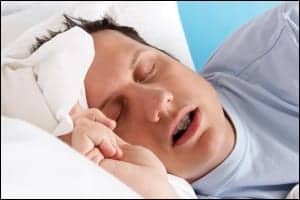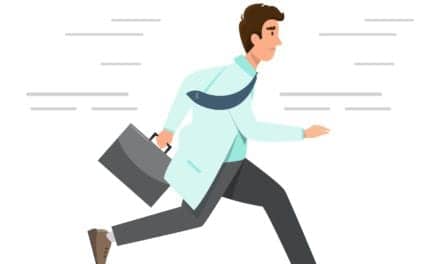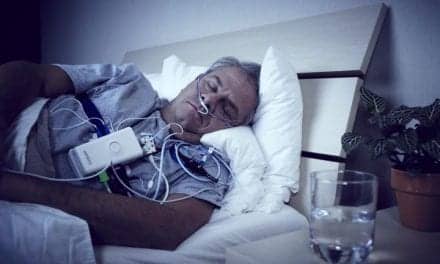Between the AASM’s tech track at SLEEP 2018 and the AAST’s first standalone annual meeting this fall, there’s a lot of opportunity for sleep technologists to continue their education and network with other sleep professionals.
Sleep technicians will have twice the opportunity to network and continue their education at two separate sleep medicine shows in 2018. The annual SLEEP meeting—joint produced by the American Academy of Sleep Medicine (AASM) and the Sleep Research Society—historically happens at the same time and place as the American Association of Sleep Technologists (AAST) annual meeting. But after some changes that occurred in the last year, the two shows are now separated—each of them now an exciting chance for sleep technologists.
For the first time, the AASM is offering a “tech track” at SLEEP 2018, and the AAST will be holding its first standalone meeting for sleep technologists. So what can you expect from each of these shows?
SLEEP 2018’s New Tech Track
The annual SLEEP meeting will take place from June 2-6, 2018 in Baltimore, Md, with the two-day tech track taking place on the Monday and Tuesday.
“Since the two shows have gone their separate ways, it was decided that we should have a track within [SLEEP 2018] that is specifically dedicated to what sleep technologists need to know,” Scott Williams, AASM fellow and chair of the new sleep technologist and respiratory therapist education committee, an outgrowth of the AASM education committee, tells Sleep Review via a phone interview. To figure out what the new track should entail, the committee looked to sleep technologists themselves. “We approached it by talking to a number of technologists and asking them: What do you want to know about and what would be useful for you?” says Williams. “We’re hoping that this combination of topics is going to be practical and also academically satisfying.”
Some of the topics offered this year include applying electrodes, monitoring respiration, and learning advanced modes of positive airway pressure therapy.
Although the track is geared toward technologists, Williams says the AASM doesn’t want to limit the types of people who might be interested in attendance—including practicing physicians, PhDs, or anyone who thinks that the track might be useful. “We want those seasoned physicians and any other professionals who may want to attend a presentation or hear a speaker to know that they’re invited, and we’d be excited to have them,” he emphasizes.
Given that this tech track is in its infancy, it’s hard to say whether it will attract enough attention to continue in the future, but Williams has high hopes it will be successful. “Depending on the overall response, publicity, and attendance, this track could be a continuing trend,” he says. “We obviously don’t want to put in a whole lot of time and effort into something that isn’t useful for people, and we know, especially for sleep technologists, that their conference time is very limited. So, we’ll find out!”
AAST’s First Standalone Annual Meeting
For the first time, the AAST will hold its own show—separate from the annual SLEEP meeting—in Indianapolis, Ind, from September 28-30, 2018.
In a statement on the AAST website, Rita Brooks, MEd, RPSGT, REEG/EPT, AAST president, says, “As the premier organization dedicated to sleep professionals, this meeting will reflect the education and networking that is solely dedicated to our community of sleep technologists.”
Abigail Lynn, AAST executive director, tells Sleep Review via email, “We were excited to take on the challenge of building a meeting from scratch and creating a dedicated conference that supports the unique needs of sleep technologists. This was the first year AAST held a more formal presentation abstract submission and review process.”
The AAST’s program committee developed an abstract form that allowed speakers to submit descriptions of their presentations with learning objectives and to self-identify the sleep-related topics their session covers. “This information,” says Lynn, “was integral for the committee to drive forward an innovative schedule that brings together different session formats and lengths covering a variety of important topics. This is something we believe will be appealing to our attendees.”
Since the field of sleep technology is changing and sleep technologists are expanding into new roles, Lynn says that in response techs will need to improve their skills, knowledge base, and education in order to provide a higher level of care in sleep centers that are serving a more complex patient population. “We hope that attendees at the Annual Meeting will take away practical knowledge they can immediately implement.”
The AAST will also be offering more than 20 AAST and AARC continuing education credits to help sleep technologists maintain their certification and stay abreast of trends within the sleep field.
In addition to the speakers, the AAST will be celebrating its 40th anniversary as an organization, along with the 40th anniversary of BRPT, its credentialing body.
“We hope to see many of our AAST members attending the show,” says Lynn, “as well as those in the sleep community with a sleep technologist, sleep educator, or sleep manager role.”
To get more information on SLEEP 2018 and the new tech track, visit www.sleepmeeting.org, and to learn more about the AAST’s first annual meeting, visit www.aastweb.org/2018annualmeeting.
Dillon Stickle is associate editor of Sleep Review.





